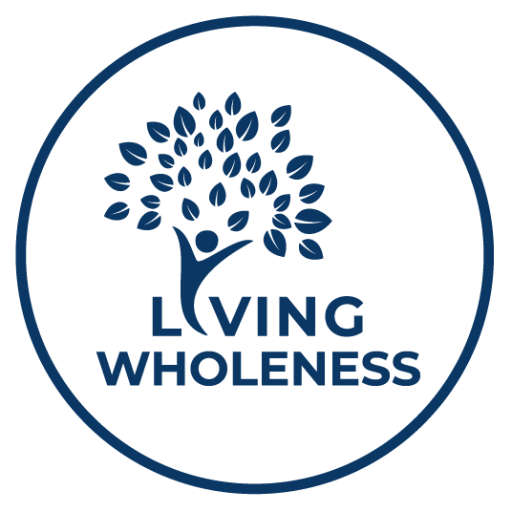Summary of
The Christian Wholeness Framework
Five Steps and Five Shapes
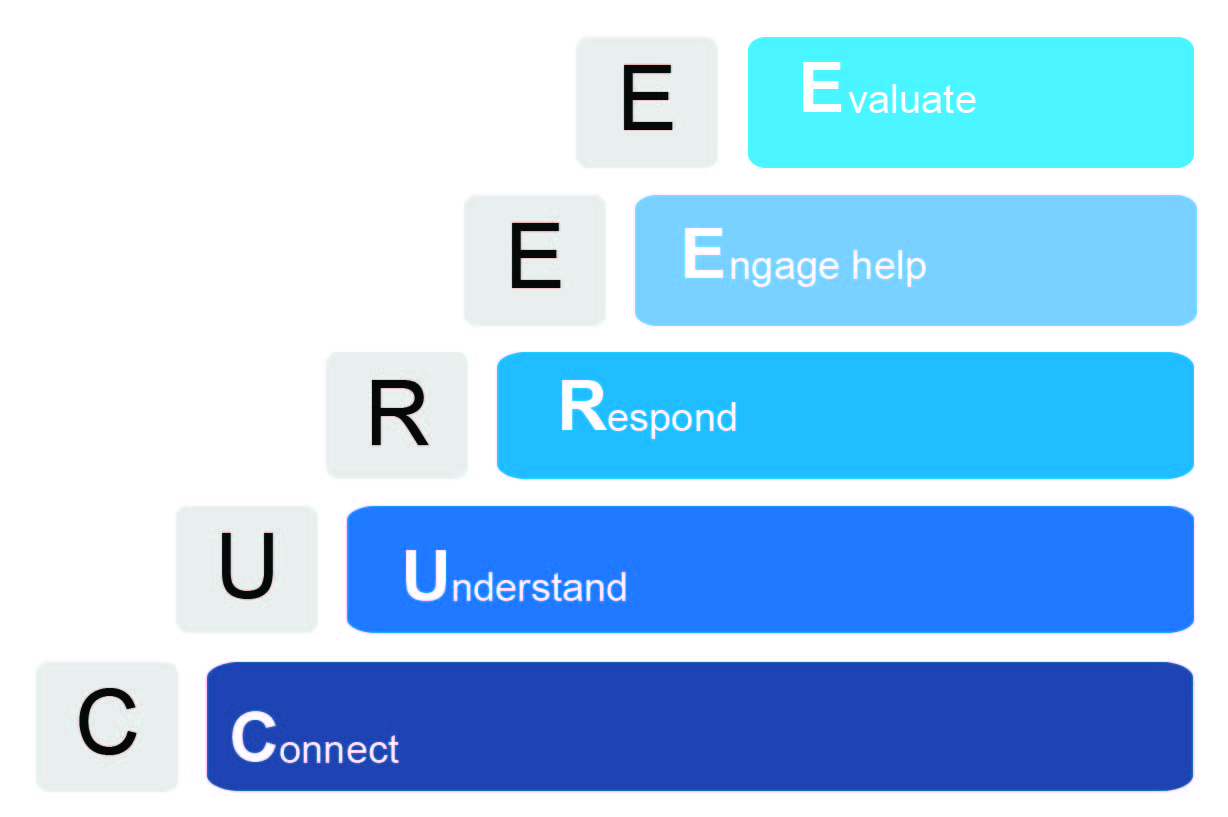

Five Steps
These are sequential Steps of the process within any relationship, placed one on top of another, upon which you can walk up, as you Connect and Understand before you Respond and then Engage Help from others. You can also walk back down to reinforce the underlying Steps as needed, Evaluating as you go how that relationship is going. Each step has a predominant Shape (or Shapes) connected with it.
Connect: to love
A Step for our Intimacy with God, the God of love and connection. This step illustrates the Great Commandment (Mark 12:30-31, to love God and to others as ourselves).
Connecting Processes of engaging the Triangle as we connect with God, with ourselves and with others. Connection is defined by and constructed in SAFETY (Small, Attitudes, Facing, Empathy, Time, You).
Connecting Attitudes of care, confidentiality and choice as illustrated by the “invitational posture”. As connection occurs, Attachment, the glue of relationships, develops and supports the subsequent attitudes of Attending to, Accompanying and Attuning to another person.
Connecting Approaches include the use of micro skills and Basic Trialogue – Connecting with God, the other and our self as illustrated by the Triangle.
Understand: to know
A Step for our Imitation of Christ. As we know Him we become like Him. This Step illustrates the New Commandment (John 13:34, to love others as Jesus loves us). Listen, with Understanding Questions “Where are you at?” and, “How are you? – What’s that like for you? – Have you had any similar experiences elsewhere?”.
Understanding the Processes of using the Square and the Circles:
Locate current and/or past issues on the Square, the five Circles, and other Shapes as relevant.
Link this understanding together, making sense of how the issues: fit together as a jigsaw puzzle forming a recognisable picture or pattern of the person/system can be summarised providing a whole picture or formulation of what is happening in a person, why it is happening, allowing for moving onto the Response Step, understanding how to help.
Understanding Attitudes of being curious, aware and noticing what is happening, and to understand deeper.
Understanding Approaches, assisted by micro and meta skills include the use of Relational Tennis and other measures, ranging from the MBTI (Myers Briggs)/Enneagram, right through to psychometric evaluations
Respond: to grow
A Step for our being Influencers for the gospel with Christ. This Step illustrates the Great Commission (Matthew 28:18-20, to go into all the world, preaching the gospel and making disciples of Jesus).Response Questions – undergirded by the underlying Connection and Understanding Steps, asking, “Where could you be?” “How could you be different from now?” “What difference is God making in your life?”
Response Processes of using the:
Circles allows us to locate the journey of Responding to change as on a therapeutic map of the person and to access our ‘tool bag’ of Response (including therapy) tools to facilitate wholistic God-centred transformation. A central Response is to bring our pain, failings and sinfulness into the presence of God to exchange them for His unfailing love, His forgiveness, freedom and fullness, that in our daily lives we might fight the fight of faith.
Shape of the Cross (God’s Response to a broken race) and the combined Shape Of the Square and Cross; and the combined Shape of the Cross and Circles. To develop wholistic God-Centred transformation, through returning to our positional home with God and to assist our remaining in a practice of our abiding in him.
Response Attitudes to assist “C.H.A.N.G.E.”. Attitudes to gently Challenge and Champion, assisting the other person to Higher levels of functioning and living, helping people to Apply in action New opportunities as they Grow with your Encouragement and Empowering.
Response Approaches/tools located from the outside of the person/system facilitated by the use of Relational Tennis, accessing various social, mind and heart helps and interventions, right through to central spiritual changes, particularly with the use of deeper/therapeutic Trialogue.
Engage Help: to show servant-leadership
A Step for our Engaging Help of the Indwelling Holy Spirit, with the purpose of our becoming servant leaders, like Jesus. This Step illustrates what commenced in the book of Acts in relation to the Holy Spirit’s coming to the Church.
Engage Help Question – “Who else do you need in your life at this time?” “… to support you/serve/ link in with?”
Engage Help Processes use the Pyramid Shape illustrating the three concepts of receiving support to serve as we link with others.
Engage Help Attitudes of servant leadership, in humility, as Jesus did, washing His disciples feet just prior to his death.
Engage Help Approaches (being supported, serving and linking) range from just doing life with others, right through to mentoring, supervising and coaching, and providing of general services to/from others.
evaluate: how did I/we/you go?
The evaluation Stepallows us to recalibrate as individuals or as a group in our journey towards wholistic God-centred transformation
evaluate Questions: How are we, how are they, and how is God within this process of evaluating? How we are going, with our wholistic God centred transformation, within ourselves and out through to others as we learn, live, and give the Steps and Shapes?
evaluate Attitudes are of facing feedback with vulnerable openness
Five Steps
The Triangle
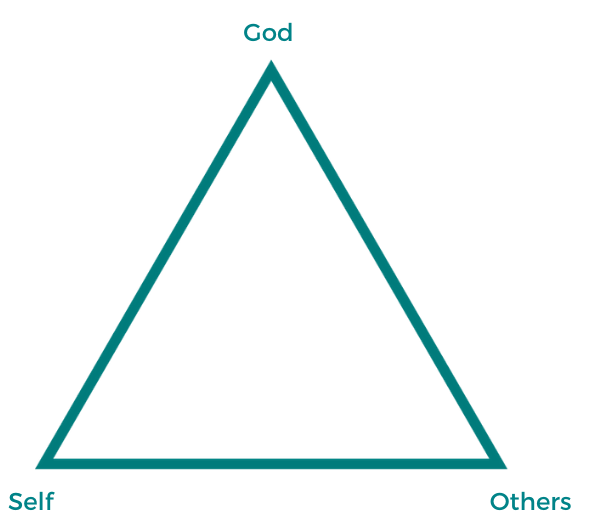

The relational Triangle corresponds with the first Step, Connect. The Triangle can invite us to consider “Why am I?”. It reminds us that we are here primarily for our relationship in three directions with God, with others, and with ourselves. The Triangle also represents the healing process of Trialogue, through meaningfully being together with God, with others and with our self. It illustrates the Great Commandment, to Love God and Love others as oneself and yes, in a wholistic way. There is the intentional and proactive direction of flow, from God through us to other/s
The Circles
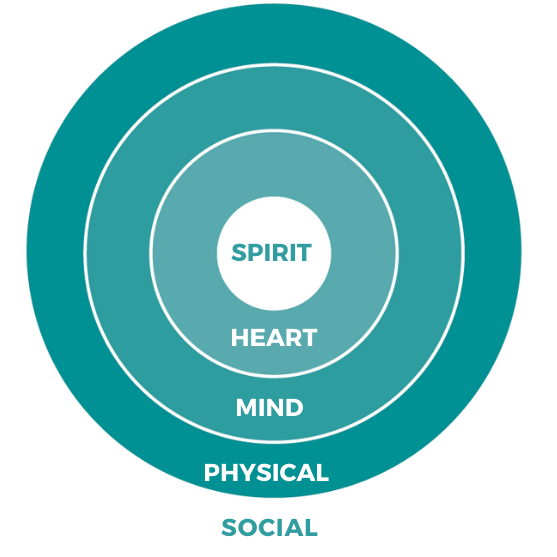

The Circles correspond with the Understand Step, and also with the Response Step. The Circles can invite us to consider, “Who am I?”. The five Circles (social, physical, mind, heart and spirit) present a biblical anthropology of individuals and humanity. The Circles illustrate our need for the rebirth of our spirit, for our heart to be refreshed, our mind to be renewed, our bodies to be restored and our relationships to be reconciled. The Circles are the core CWF Shape, involving all the other Shapes, with the Triangle and Pyramid in the social Circle, and the Shape of the Cross in the spirit Circle. Any of the Circles or their sectors can be placed on any of the quadrants of the Square. The Circles also highlight the goal and process of internal God-centred Transformation from the inside out, growing in our Attitudes, Skills and Knowledge (TASK). The Circles encapsulate and further elaborate on the CWF, being truly:
Christian: A God-centred anthropology of humanity, as demonstrated in the central Circle of the spirit
Wholistic: providing an approach which is centred on God. Wholeness brings together a robust theology, psychology, biology, sociology and anthropology of change, leading us toward a true “shalom”. It shows the purposes of our circles in our journey towards God-centred transformation as we are reborn, refreshed, renewed, restored in reconciling relationships
Framework: providing a structure to be able to access and locate ourselves or another person regarding the essentials of wholistic God-centred living. The structure is like a: depth gauge, of the level of conversation with another or even with ourselves, and whether we are out of our depth; jigsaw puzzle, highlighting missing areas of information about ourselves or others, to help the puzzle develop into a full picture; directional map, in our journeying with another one towards or away from God-centred flourishing; tree, of our personal/systemic growth in the context of our family/other system tree; tower of our life where each level is one year of our life, having the same room/floor plan of the circles and their sectors; tool bag which helps us to see what skills we may/may not have to assist Responses.
Below is the full diagram of the Circles with their component sectors, representing what makes up each respective Circle
The Square
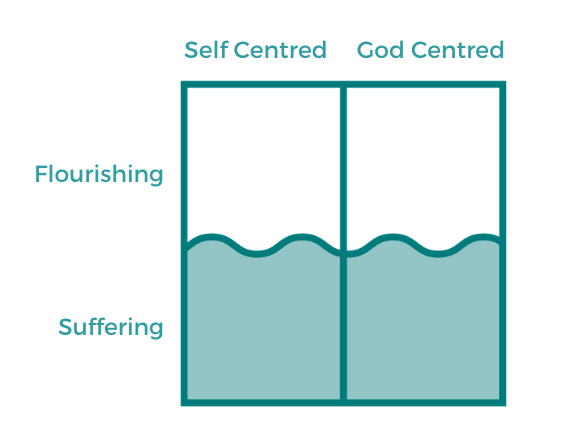

The Square corresponds to the Understanding Step as well as to the Response Step. The Square can invite us to consider “Where am I?” in relation to the practice of our lives (an Understanding Step question), and moving up to the Response Step of “where could I be?”, “Where am I going?” and “What difference is God making in my life?” (allowing Response Step questions, for example of “where could I be?”). It particularly highlights the ultimate goal of God-centred flourishing (which will only be fully achieved in the New Heaven ), and the two dimensions of change: healing, growth and flourishing (from the bottom to the top) and more importantly the process of sanctification in our journey of discipleship (moving from left to right). The Square indicates at any given time where any part of us or of another may be, in any of the four quadrants: self-centred success or suffering, or God-centred flourishing or suffering.
The Shape of the Cross


The Shape of the Cross corresponds with the Response Step. This Shape invites us to answer the questions of , “where am I with God?” or “have I been born again and entered a new home/family/kingdom?”. The Shape reminds us of what Jesus did in His death and resurrection. The two sides of the vertical shaft below the cross bar refer to our spiritual position, of leaving our place of being dead in sin to being dead to sin and coming “home”, of being “with God”. When we become Christians we are born into a new home or family, and a new place or kingdom. This needs to be applied daily, accessing the five characteristics and aspects (the 5 “P’s”) of God:
His Person (The Trinity: Father, Son and Holy Spirit);
His Presence (He abides, communes and dwells within our spirit by His Spirit, as we are in His family and His kingdom);
His Placement of Us in Him and He in us (with our being forgiven of all sin, born again into God’s family as God’s child, united in Christ, and indwelt by the Holy Spirit, being set apart for Him);
His Purposes for Us (He calls us to Intimacy with Himself, i.e. loving others as ourselves [The Great Commandment: Mark 12:30, 31], to Imitation of Christ [the New Commandment: John 12:34] and to be Influencers for the Gospel [the Great Commission: Matthew 28:18-20], being Indwelt with the Holy Spirit [Acts and following]);
His Provisions for Us (five “Fs”: His unFailing love, Forgiveness, Freedom, Fullness, so that we can Fight the good fight).
The combinations of the Shape of the Cross with the Square and the Circles are used to illustrate the process of God-centred transformation, showing how that we can return and repent, and how we can abide in Christ, allowing His Holy Spirit to flow out through all of our circles and sectors to others as we go on our journey of discipleship and grow in our process of sanctification.
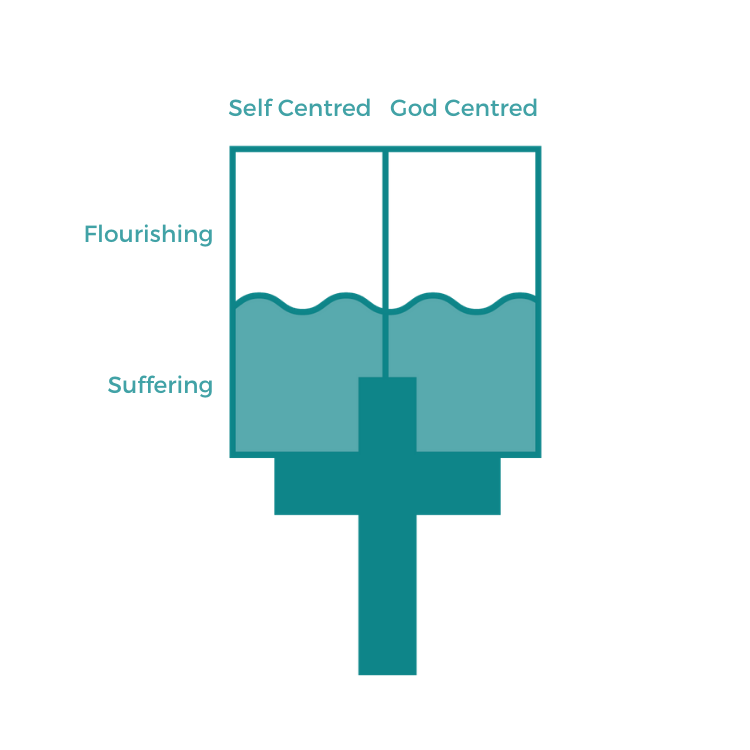



THE TWO SHAPES OF THE CROSS COMBINATIONS
The Pyramid


The Pyramid corresponds to a number of points of the supportive aspect of our social Circle. It also corresponds to the Engage Help Step: being and accessing the body of Christ for one another. In addition, the base and the sides of the Pyramid are where the five Steps occur, so that people around the Pyramid periphery may Connect with, Understand, Respond to, and Engage Help with each other so that together we can link and servant-lead as we walk the steps with the recipient(s). The Pyramid is a symbolic reminder of the body of Christ, its inter-Connectedness, the equality of all members, the existence of both carer and recipient, and the overarching person of the Trinity, sustaining and being with His body. The Pyramid is also a way to locate your own place(s) within the body of Christ. There are thus three functions of the one Pyramid:
Support: because when we are in the centre of the Pyramid, when we have a number of people with differing gifts around us, we flourish.
Serve: because we are called to serve and to lead others, with others, to fulfil the Great and New Commandments and the Great Commission.
Link: because we offer best care when we as a community care together for the recipient/s.

